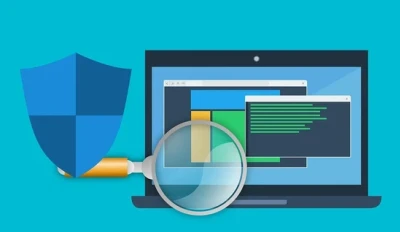
In the current scenario, web applications are gaining momentum, and businesses and corporations are hosting several services. This increased utilization of web applications naturally raises the odds of having cybersecurity vulnerabilities. Grasping these Linux buffer overflow vulnerabilities is critical in your quest to protect sensitive information and maintain network integrity.
In this article, we’ll examine the basics of web application security vulnerabilities, their implications, and the strategies for mitigating associated risks.
What are Web Application Security Vulnerabilities?
 Vulnerabilities in web applications refer to weaknesses in a system that a hacker would leverage to access unauthorized information, execute malicious code, install malware, or steal sensitive information. According to a report by CISA, about 85% of successful attacks employ known vulnerabilities. The vulnerabilities could be associated with defects in coding, poorly chosen configurations, or outdated software.
Vulnerabilities in web applications refer to weaknesses in a system that a hacker would leverage to access unauthorized information, execute malicious code, install malware, or steal sensitive information. According to a report by CISA, about 85% of successful attacks employ known vulnerabilities. The vulnerabilities could be associated with defects in coding, poorly chosen configurations, or outdated software.
Overcoming such network attacks is especially difficult for small businesses, corporations, and even end-users, who may struggle to simultaneously compete with several security attacks.
Since security threats in wireless networks become a critical risk for every organization, an extended range of security knowledge becomes very important to prevent carelessness from becoming the root cause of application-layer vulnerabilities.
A vulnerability scanner will typically scan your environment and compare the results with a vulnerability database or a list of known flaws. However, to properly understand the cyber threats and vulnerabilities you will likely be exposed to, it is crucial to begin with the basics.
Buffer Overflow Vulnerability Basics
One of the most famous classes of vulnerabilities is the buffer overflow. Knowing how to handle Linux buffer overflow vulnerabilities is critical to preventing buffer overflow attacks. An overflow occurs when a program writes more data to a buffer than it is designed to hold or when a program attempts to put data beyond a buffer. This can corrupt the application and lead to the execution of malicious code that enables cybercriminals to gain unauthorized access to systems and networks.
Buffer overflows have been well documented, yet they continue to cause misery for enterprises of all sizes. An attacker exploiting a web application's stack execution may be able to execute arbitrary code and take control of a machine. According to the OWASP Top Ten, buffer overflow vulnerability remains one of the more problematic concerns because it has a tremendous potential impact.
Types of Buffer Overflow Vulnerabilities
According to OWASP, there are two significant types of Linux buffer overflow vulnerabilities:
- Stack-Based Buffer Overflow: This includes an attacker sending malicious code to an application in the form of data, loading itself into a stack buffer. This operation overwrites other data on the stack and gives the attacker control.
- Heap-Based Buffer Overflow: This vulnerability generally attacks heap memory. It is based on flooding a program's memory space beyond its usage limits and overwriting the data in the heap to exploit certain programming peculiarities. Once this is performed, an attacker can adjust the software and thus gain unauthorized access.
Denial of Service (DoS) Basics
The other critical vulnerability within web applications is the DoS vulnerability, which stands for Denial of Service. The whole point of a DoS is to bring a machine or network down and thus render its services unavailable for legitimate users. An attacker generally sends vast amounts of traffic or a quantity of information that results in the crashing of the target; hence, legitimate users - employees or subscribers - cannot access the service. The FBI estimated that more than 70% of organizations have been victims of DoS at one time or another.
Thankfully, DoS attacks can be remedied much faster than other attacks. Blocking or tracing DoS attacks is usually easier because a single device attacks a particular resource.
Why Are These Basics So Essential?
Understanding the basics of web application security vulnerabilities is essential, as these vulnerabilities form the foundation for attacks in network security—both well-known and obscure. Knowledge of these vulnerabilities equips you with an understanding of the threats you face. Understanding what web application security vulnerabilities exist, how they can be exploited through attacks, and the scenarios where an attacker would use the exploits organize your organization's preparation for whatever risks come its way.
Best Practices for Vulnerability Management
Best practices for securing your Linux environment against vulnerabilities and exploits include:
Routine Vulnerability Scanning
 A vulnerability scanner will help you avoid security vulnerabilities in your apps. These scans automatically test your environment against a continuously updated database of known vulnerabilities, alerting and methodically allowing for mitigation before potential issues can be exploited.
A vulnerability scanner will help you avoid security vulnerabilities in your apps. These scans automatically test your environment against a continuously updated database of known vulnerabilities, alerting and methodically allowing for mitigation before potential issues can be exploited.
Several applications are well-regarded for performing routine vulnerability scanning on Linux systems, helping to ensure that potential security issues are identified and mitigated. OpenVAS (now called Greenbone Vulnerability Manager) is a comprehensive open-source tool for scanning and managing vulnerabilities, making it suitable for extensive security audits. Nessus, developed by Tenable, is another powerful and widely used vulnerability scanner that offers detailed reporting and high detection accuracy. Nikto is a straightforward yet effective web server scanner that hunts for known vulnerabilities, server configuration problems, and outdated software. Lynis is a robust security auditing tool for Unix-based systems focusing on hardening, compliance testing, and vulnerability detection. Lastly, ClamAV is a versatile open-source antivirus engine that can scan for various types of vulnerabilities, including those related to email, files, and web content.
Keep Software Up to Date
Keep your software up to date. This means it will be kept secure, too. Most attacks happen via vulnerabilities known for some time, for which fixes have already been published. Keep your systems, libraries, and frameworks current to guard against vulnerabilities others know about.
Several applications can help keep Linux software up to date, ensuring your system remains secure and efficient. Arch Linux and Manjaro Linux are popular due to their excellent package management systems, ensuring your servers always have access to the latest updates. For comprehensive patch management, tools highlighted by BleepingComputer include automated systems that seamlessly update your Linux operating system. APT (Advanced Package Tool) and Snap are are commonly used to manage updates on Ubuntu-based systems.
Secure Coding Practices
 Developers should implement secure coding practices to avoid introducing vulnerabilities during development. This includes input validation, output sanitizing, and proper error handling to reduce and prevent buffer overflow and other vulnerabilities.
Developers should implement secure coding practices to avoid introducing vulnerabilities during development. This includes input validation, output sanitizing, and proper error handling to reduce and prevent buffer overflow and other vulnerabilities.
For secure coding practices on Linux, several applications and resources stand out. The OWASP Secure Coding Practices Quick Reference Guide provides comprehensive guidelines for mitigating common software vulnerabilities and can be seamlessly integrated into the software development lifecycle. LinuxSecurity.com features articles and best practices for enhancing security in Linux web applications, focusing on defending against vulnerabilities like injection and cross-site scripting attacks. Another valuable resource is the OWASP Foundation, which provides extensive guidance on implementing a secure software development framework. Lastly, Snyk offers detailed insights into secure coding practices, making it easier for developers to write secure code from the ground up.
Access Control Implementation
Limit access to sensitive data and critical systems to prevent unauthorized access. Use role-based access to provide users with only the information and resources required to perform their roles.
Security-Enhanced Linux (SELinux) and AppArmor provide mandatory access control (MAC) mechanisms to define what resources applications can access, enhancing system security. iptables is a powerful firewall tool that manages network traffic rules, which are crucial for controlling external and internal network access. TCP Wrappers offer host-based access control to monitor and filter incoming network requests, adding a layer of security to network services. PAM (Pluggable Authentication Modules) enables flexible authentication methods for programs, facilitating secure access control policies across different services.
Regular Security Training
Education in cybersecurity best practices is essential to reducing vulnerability risks. Regular training should be provided to update employees on new threats and prevention measures.
For regular security training on Linux, Coursera offers comprehensive courses covering basic to advanced security concepts. Wiz provides essential best practices, including training on VPN solutions like OpenVPN and WireGuard for securing Linux systems. LinuxSecurity.com offers expert-recommended security practices for kernel hardening and filesystem protection. Coursera also has a course specifically for security experts, focusing on utilities, containers, networks, and firewalls. LinuxLinks provides a broad list of security applications and resources, assisting in training on various security tools and best practices.
Our Final Thoughts on the Importance of Vulnerability Fundamentals
The need for web applications to support business operations continues to grow. With this growth, knowledge of cybersecurity vulnerabilities becomes increasingly valuable. Securing your network from potential attacks by understanding some of the vulnerabilities that threaten Linux systems is essential to you and your organization. Learning the basics of different types of vulnerabilities, such as buffer overflows and DoS attacks, can prepare your organization to proactively fight these types of threats.













